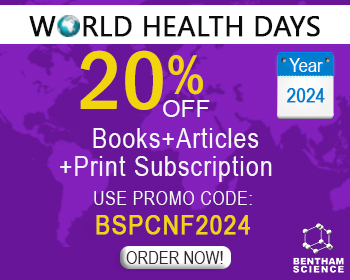Abstract
Despite significant research in understanding of neoplastic diseases, the success rate for oncology drugs is relatively very low. A major challenge before the scientific community is to design new chemical entities that will be highly selective for cancer cells so as to minimize side effects. Classification models (CMs) models play a prominent role in prediction of the biological properties of newly designed compounds before their synthesis and prevent non-optimal use of resources. Though correlation models far outnumber classification models for development of various therapeutic agents but the significance of classification models for development of anti-cancer agents can not be underestimated. Various techniques employed for development of classification models for anti-cancer activity have been briefly reviewed. Moreover, successful use of some of these classification techniques for the development of models for anti-proliferative activity has been illustrated using a data set comprising of 53 analogues of N-Benzoylated phenoxazines and phenothiazines. Resulting classification models with high degree of accuracy can play a vital role in providing lead structures for the development of novel anti-proliferative agents for cancer chemotherapy.
Keywords: Classification modelling, molecular descriptors, random forest, moving average analysis, decision tree, anticancer agents, classification techniques
Current Topics in Medicinal Chemistry
Title:Classification Models for Anticancer Activity
Volume: 12 Issue: 24
Author(s): R. Dutt and A.K. Madan
Affiliation:
Keywords: Classification modelling, molecular descriptors, random forest, moving average analysis, decision tree, anticancer agents, classification techniques
Abstract: Despite significant research in understanding of neoplastic diseases, the success rate for oncology drugs is relatively very low. A major challenge before the scientific community is to design new chemical entities that will be highly selective for cancer cells so as to minimize side effects. Classification models (CMs) models play a prominent role in prediction of the biological properties of newly designed compounds before their synthesis and prevent non-optimal use of resources. Though correlation models far outnumber classification models for development of various therapeutic agents but the significance of classification models for development of anti-cancer agents can not be underestimated. Various techniques employed for development of classification models for anti-cancer activity have been briefly reviewed. Moreover, successful use of some of these classification techniques for the development of models for anti-proliferative activity has been illustrated using a data set comprising of 53 analogues of N-Benzoylated phenoxazines and phenothiazines. Resulting classification models with high degree of accuracy can play a vital role in providing lead structures for the development of novel anti-proliferative agents for cancer chemotherapy.
Export Options
About this article
Cite this article as:
Dutt R. and Madan A.K., Classification Models for Anticancer Activity, Current Topics in Medicinal Chemistry 2012; 12 (24) . https://dx.doi.org/10.2174/1568026611212240002
| DOI https://dx.doi.org/10.2174/1568026611212240002 |
Print ISSN 1568-0266 |
| Publisher Name Bentham Science Publisher |
Online ISSN 1873-4294 |
Call for Papers in Thematic Issues
Chemistry Based on Natural Products for Therapeutic Purposes
The development of new pharmaceuticals for a wide range of medical conditions has long relied on the identification of promising natural products (NPs). There are over sixty percent of cancer, infectious illness, and CNS disease medications that include an NP pharmacophore, according to the Food and Drug Administration. Since NP ...read more
Current Trends in Drug Discovery Based on Artificial Intelligence and Computer-Aided Drug Design
Drug development discovery has faced several challenges over the years. In fact, the evolution of classical approaches to modern methods using computational methods, or Computer-Aided Drug Design (CADD), has shown promising and essential results in any drug discovery campaign. Among these methods, molecular docking is one of the most notable ...read more
Drug Discovery in the Age of Artificial Intelligence
In the age of artificial intelligence (AI), we have witnessed a significant boom in AI techniques for drug discovery. AI techniques are increasingly integrated and accelerating the drug discovery process. These developments have not only attracted the attention of academia and industry but also raised important questions regarding the selection ...read more
From Biodiversity to Chemical Diversity: Focus of Flavonoids
Flavonoids are the largest group of polyphenols, plant secondary metabolites arising from the essential aromatic amino acid phenylalanine (or more rarely from tyrosine) via the phenylpropanoid pathway. The flavan nucleus is the basic 15-carbon skeleton of flavonoids (C6-C3-C6), which consists of two phenyl rings (A and B) and a heterocyclic ...read more
 56
56
- Author Guidelines
- Graphical Abstracts
- Fabricating and Stating False Information
- Research Misconduct
- Post Publication Discussions and Corrections
- Publishing Ethics and Rectitude
- Increase Visibility of Your Article
- Archiving Policies
- Peer Review Workflow
- Order Your Article Before Print
- Promote Your Article
- Manuscript Transfer Facility
- Editorial Policies
- Allegations from Whistleblowers
- Announcements























